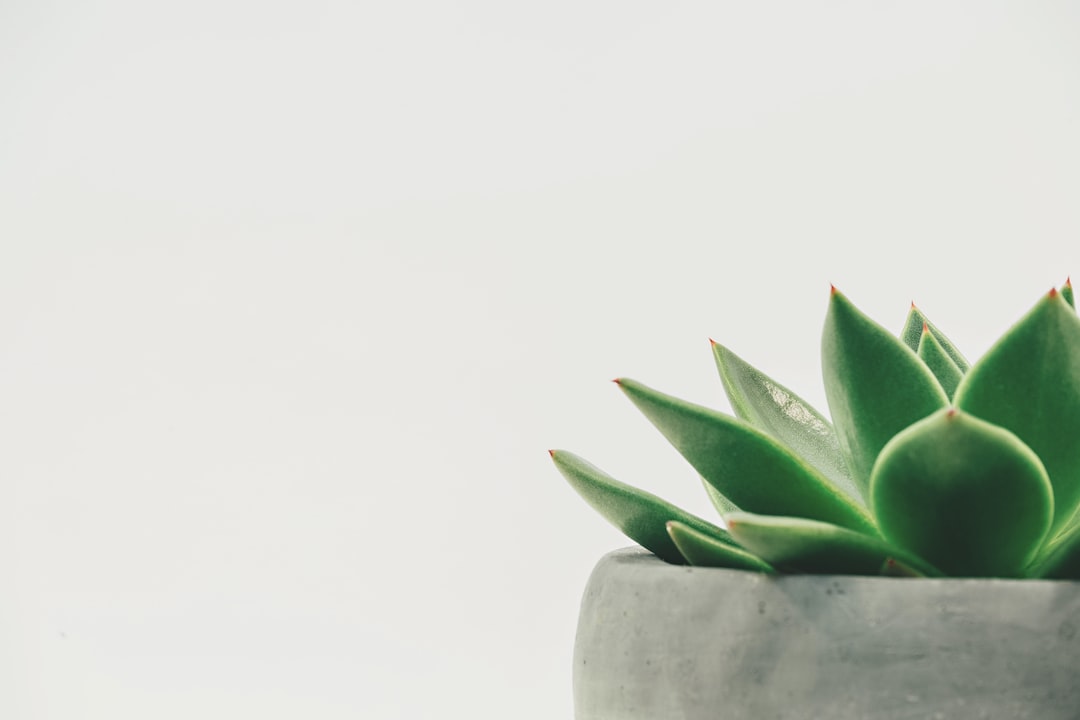Green Thumb Guide: How to Trim and Care for Your Lucky Bamboo Plant

Lucky bamboo plants, also known as Dracaena sanderiana, are popular houseplants that are believed to bring good luck and positive energy into the home. These plants have a rich history and cultural significance, particularly in Chinese culture. Lucky bamboo plants are often given as gifts for special occasions such as weddings, birthdays, and housewarmings.
The history of lucky bamboo plants can be traced back to ancient Chinese culture, where they were considered a symbol of good fortune and prosperity. It is believed that the number of stalks in a lucky bamboo plant has different meanings. For example, a plant with two stalks represents love and is often given as a gift to couples. A plant with three stalks represents happiness, wealth, and longevity.
There are several types of lucky bamboo plants available, each with its own unique characteristics. The most common type is the straight-stemmed lucky bamboo, which has long, straight stalks. There are also curly or twisted varieties, which have stems that grow in a spiral pattern. Additionally, there are lucky bamboo plants with variegated leaves, which add a touch of color to any space.
Key Takeaways
- Lucky bamboo plants are popular indoor plants that are believed to bring good luck and positive energy.
- Trimming and caring for lucky bamboo plants is important for their health and longevity.
- Tools required for trimming lucky bamboo plants include sharp scissors, pruning shears, and a clean container of water.
- To trim lucky bamboo plants, cut the stem at a 45-degree angle and remove any yellow or brown leaves.
- Tips for maintaining healthy lucky bamboo plants include keeping them in indirect sunlight, changing their water regularly, and fertilizing them every few months.
Importance of Trimming and Caring for Lucky Bamboo Plants
Trimming and caring for lucky bamboo plants is essential for their overall health and longevity. Regular trimming helps to maintain the shape and appearance of the plant, preventing it from becoming overgrown or leggy. Trimming also promotes new growth and helps to keep the plant looking vibrant and healthy.
Proper care is crucial for the well-being of lucky bamboo plants. These plants require specific conditions to thrive, including the right amount of light, water, and nutrients. Neglecting their care can lead to stunted growth, yellowing leaves, or even death.
Tools Required for Trimming Lucky Bamboo Plants
To trim lucky bamboo plants effectively, you will need a few basic tools. The most important tool is a pair of sharp scissors or pruning shears. These will be used to trim the stalks and remove any dead or yellowing leaves.
Clean water is also essential for trimming lucky bamboo plants. It is important to use clean, filtered water to avoid introducing any harmful chemicals or contaminants to the plant.
Lastly, you will need a container to collect the trimming waste. This can be a small bucket or bowl that is easily accessible while you are trimming the plant.
How to Trim Lucky Bamboo Plants
| Step | Description |
|---|---|
| 1 | Identify the stems that need trimming |
| 2 | Use sharp and clean scissors to cut the stems at a 45-degree angle |
| 3 | Trim the stems just above a node or a joint |
| 4 | Remove any yellow or brown leaves from the plant |
| 5 | Place the trimmed stems in fresh water or soil to encourage new growth |
Trimming lucky bamboo plants is a relatively simple process, but it is important to follow the correct steps to ensure the health and well-being of the plant.
1. Start by inspecting the plant and identifying any dead or yellowing leaves. These should be removed first, as they can drain energy from the plant and hinder its growth.
2. Next, trim any overgrown or leggy stalks. Use your scissors or pruning shears to cut the stalks just above a node, which is a small bump on the stem where new growth occurs.
3. If you want to shape your lucky bamboo plant, you can also trim the top of the stalks to create a more uniform appearance. Again, make sure to cut just above a node.
4. After trimming, place the trimmed stalks in clean water to allow them to root and grow into new plants if desired.
It is important to note that over-trimming can be detrimental to the health of the plant. Avoid cutting off too much foliage or removing too many stalks at once, as this can cause stress and potentially kill the plant.
Tips for Maintaining Healthy Lucky Bamboo Plants
In addition to regular trimming, there are several other factors to consider when caring for lucky bamboo plants.
Proper lighting and temperature are crucial for the health of these plants. Lucky bamboo plants thrive in bright, indirect light. Avoid placing them in direct sunlight, as this can scorch the leaves. Additionally, make sure to keep the plants in a temperature range of 65-90°F (18-32°C) for optimal growth.
Water quality and frequency are also important considerations. Lucky bamboo plants should be watered with clean, filtered water. Tap water can contain chlorine and other chemicals that can be harmful to the plant. It is recommended to water the plant every 7-10 days, or when the top inch of soil feels dry to the touch.
The soil and potting requirements for lucky bamboo plants are relatively simple. These plants can be grown in either soil or water, depending on personal preference. If growing in soil, use a well-draining potting mix and make sure the pot has drainage holes to prevent waterlogging.
Watering and Fertilizing Lucky Bamboo Plants

Proper watering is essential for the health of lucky bamboo plants. Overwatering can lead to root rot, while underwatering can cause the plant to wilt and die.
To water lucky bamboo plants, fill a container with clean, filtered water and place the plant in it. Make sure the water level covers the roots but does not submerge the entire plant. Change the water every 7-10 days to prevent stagnation and ensure the plant receives fresh nutrients.
Fertilizing lucky bamboo plants is not necessary but can help promote healthy growth. Use a balanced liquid fertilizer diluted to half strength and apply it every 2-4 weeks during the growing season. Be careful not to over-fertilize, as this can lead to nutrient burn and damage the plant.
Common Problems with Lucky Bamboo Plants and How to Fix Them
Despite their reputation for being easy to care for, lucky bamboo plants can still encounter some common problems. Here are a few issues you may come across and how to fix them:
1. Yellowing leaves: Yellowing leaves can be a sign of overwatering, underwatering, or poor water quality. Adjust your watering schedule and make sure to use clean, filtered water. Trim any yellowing leaves to promote new growth.
2. Root rot: Root rot occurs when the roots are constantly submerged in water, leading to fungal infections. To fix root rot, remove the plant from the water and trim away any affected roots. Allow the plant to dry out for a few days before repotting it in fresh soil or clean water.
3. Over-fertilization: Over-fertilizing can cause nutrient burn, which manifests as brown or yellow spots on the leaves. Flush the plant with clean water to remove excess fertilizer and adjust your fertilizing schedule to prevent further damage.
Propagating Lucky Bamboo Plants
Propagating lucky bamboo plants is a fun and rewarding process that allows you to create new plants from existing ones. There are several methods you can use to propagate lucky bamboo plants:
1. Water propagation: This method involves placing cuttings or trimmed stalks in a container of clean water. Change the water every 7-10 days and wait for roots to develop before transferring the plant to soil if desired.
2. Soil propagation: To propagate lucky bamboo plants in soil, take cuttings or trimmed stalks and plant them in a well-draining potting mix. Keep the soil moist but not waterlogged and wait for roots to develop before transplanting the new plant.
3. Division: If your lucky bamboo plant has multiple stalks, you can divide it by carefully separating the stalks at the base. Each stalk can then be potted individually to create new plants.
When propagating lucky bamboo plants, it is important to use clean tools and containers to prevent the spread of disease or pests.
Decorating with Lucky Bamboo Plants
Lucky bamboo plants are not only believed to bring good luck and positive energy, but they can also be used as decorative elements in your home or office. According to feng shui principles, lucky bamboo plants should be placed in the east or southeast corner of a room to attract wealth and prosperity.
There are also many creative ways to display lucky bamboo plants. They can be placed in glass vases or containers filled with decorative stones or marbles. Lucky bamboo plants can also be arranged in a spiral or braided pattern for added visual interest.
Conclusion and Final Thoughts on Lucky Bamboo Plant Care
In conclusion, lucky bamboo plants are not only beautiful additions to any space but also bring positive energy and good fortune. By following proper care and trimming techniques, you can ensure the health and longevity of these plants.
Remember to regularly trim your lucky bamboo plants to maintain their shape and promote new growth. Provide them with the right amount of light, water, and nutrients to keep them healthy and vibrant. If problems arise, such as yellowing leaves or root rot, take immediate action to address the issue.
With a little bit of care and attention, your lucky bamboo plants will thrive and bring joy and positivity into your life. So go ahead, give it a try, and enjoy the benefits of growing these beautiful and auspicious plants.



